You are here
New Releases

2023 State of World Population Report
Ours is a world of hope and possibility, a world where the human family is larger than ever before. It is a world in which we are collectively living longer and, on balance, enjoying better health, more rights, and broader choices than at any other point in human history. Ours is also a world of anxieties: the tensions of everyday life are rapidly accumulating amid economic uncertainty, the existential question of climate change, the still-rising toll of the COVID-19 pandemic, and the ongoing ravages of conflict. In November 2022, the United Nations announced that the human population had surpassed 8 billion people, and also that two-thirds of people were living in places where fertility rates had fallen below the so-called “replacement level” of 2.1 births per woman. These trends offer a nuanced look at demographic transition — the shift from higher to lower mortality and fertility — as it unfolds EXECUTIVE SUMMARY in different countries and contexts. But the subtleties of this story were very often lost. “Too many” people will overwhelm the planet, many pundits proclaimed, even as others warned that “too few” people would lead to civilizational collapse. Every population trend seems to invoke its own vision of catastrophe. Too many young people? Destabilizing. Too many old people? A burden. Too many migrants? A threat.
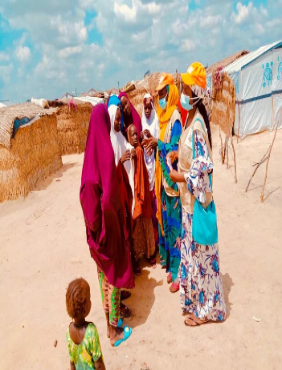
United Nations Population Fund Country programme document for Nigeria
Proposed indicative UNFPA assistance:
$145.1 million: $32.5 million from regular resources and $112.6 million through co-financing modalities or other resources Programme period:
Five years (2023-2027)
The cycle of assistance: Ninth Category: Tier I Alignment with the UNSDCF cycle United Nations Sustainable Development Cooperation Framework, 2023-2027
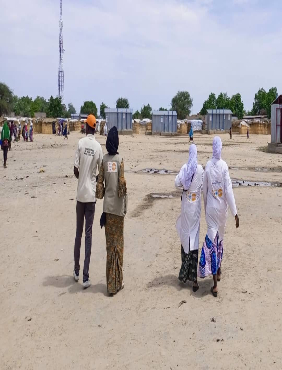
Sitrep North East Nigeria 2020
The Northeast humanitarian crisis has pervaded Borno, Adamawa, and Yobe States since July 2009 with Borno as the epicenter. The violence which saw armed opposition groups fighting the Nigerian army forced many families and individuals to flee from their homes, with displacement and untold hardship for a large segment of the population. Infrastructure such as health facilities, markets, water supply, and roads was damaged or made inaccessible. Over the last 10 years, while annually structured humanitarian interventions by the humanitarian community have led to a reduction in the burden of earlier quantified need, new displacements from sporadic attacks by Non-State armed groups and counter-military operations continue to lead to new displacements with new camp arrivals ever so incessantly. The majority of the displaced are women and children who heavily depend on humanitarian assistance for survival
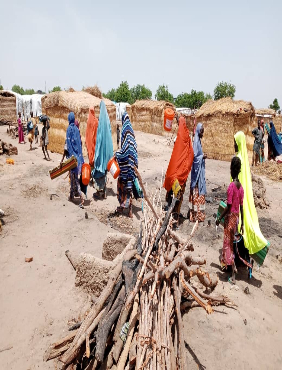
UNFPA NIGERIA HUMANITARIAN SITUATION REPORT: FOCUS NORTH-EAST CRISIS UNFPA #1/2022
The contextual factors and the humanitarian impacts of the crisis have caused a total of 7.7 million people to face adverse humanitarian conditions in areas accessible to aid workers in the BAY states (estimates indicate a further 1.02 million people in need inaccessible areas). Out of the 60 LGAs that the Joint Inter-Sectoral Analysis Framework (JIAF) classified using MSNA and other data, 19 are estimated at an ‘extreme’ level in terms of severity of needs; another 30 at a ‘severe’ level. Eight LGAs are at ‘stressed’ level, while the remaining 4 have ‘minimal severity’ needs.
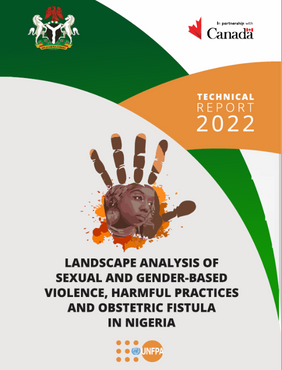
Landscape analysis of SGBV, Harmful practices and Obstetric Fistula in Nigeria - Part 1
With funding support from Global Affairs Canada (GAC), this study aims to fill the existing data gaps in SGBV in Nigeria.
Part 1.
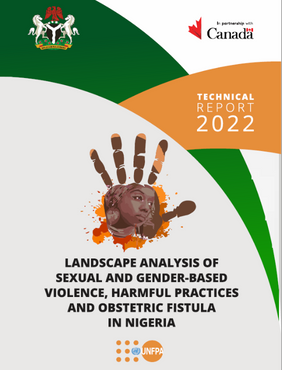
Landscape analysis of SGBV, Harmful practices and Obstetric Fistula in Nigeria - Part 2
With funding support from Global Affairs Canada (GAC), this study aims to fill the existing data gaps in SGBV in Nigeria.
Part 2.
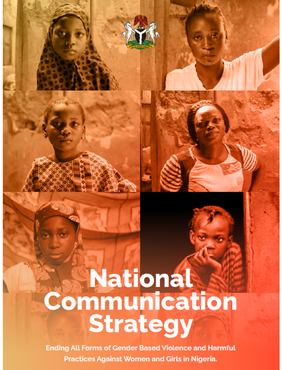
National Communication Strategy on ending all forms of GBV
This communication strategy was developed to guide stakeholders at all levels and provide necessary guidance on communicating with communities to end all forms of gender-based violence and harmful practices against women and girls in Nigeria. The strategy is designed to be flexible and adaptable to the local contexts across the different states and communities. It highlights the communication needs across the geopolitical zones and proffers recommendations to address the root causes of gender-based violence and harmful practices against women and girls in Nigeria
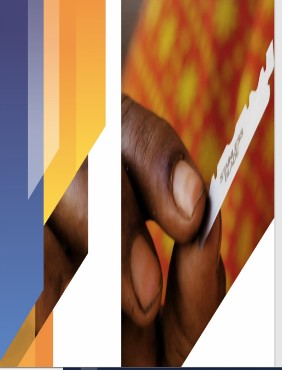
FEMALE GENITAL MUTILATION IN NIGERIA SITUATION ANALYSIS UNFPA 2021
Based on a joint statement issued by the WHO, UNFPA, and UNICEF in 2007 against the practice of FGM and calling for its elimination, the 2008 World Health Assembly (WHA) resolution on the elimination of FGM highlighted the need for member countries to develop and implement policies and plans backed by adequate resources and indicators to track progress, coordination, and impact. The UN General Assembly in 2012 also passed a resolution calling for the elimination of FGM and urging countries to create awareness, allocate resources, and enforce legislation to end the practice. In addition, the United Nations Human Right Council, during its 44th session, passed a resolution calling upon all governments to adopt comprehensive, multisectoral, and rights-based measures to prevent and eliminate FGM. Subsequently, there have been concerted global and national efforts to facilitate the abandonment of FGM. These efforts have been backed by charters, international conventions, legal and policy frameworks, and advocacy
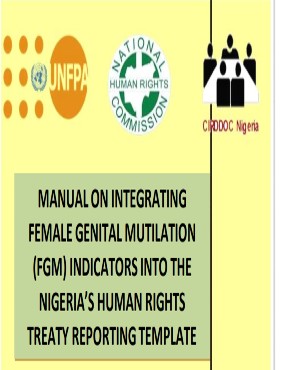
MANUAL ON INTEGRATING FEMALE GENITAL MUTILATION (FGM) INDICATORS INTO THE NIGERIA’S HUMAN RIGHTS TREATY REPORTING TEMPLATE
Generally, violence takes different forms and may be suffered by any person. However, there are some forms of violence that are peculiar to women and girls because of their sex. In Nigeria, women suffer many forms of violence which is a major issue in all parts of the country. Acts of violence are likely to result in physical, sexual or emotional suffering to female victims of violence. Violence occurring within the home and family sphere (domestic violence) is widespread and perpetrated mostly by male members of the family against women and children. These may be physical assaults, verbal abuse, marital rape (forced sex), incest, forced marriage and child marriage.
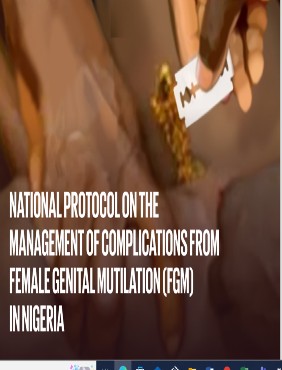
National Protocol on the Management of Complications from Female Genital Mutilation
Female Genital Mutilation (FGM) remains a serious health burden and violation of the dignity of girls and women in many countries of Africa, the Middle East, and parts of Asia. The practice is prevalent in all the six geo-political zones of Nigeria with 25% of Nigerian females “circumcised”. Over 82% of affected females suffered before their fifth birthday. It is mostly conducted by traditional “circumcisers” and intertwined with culture, religion, aesthetics, and group identity.